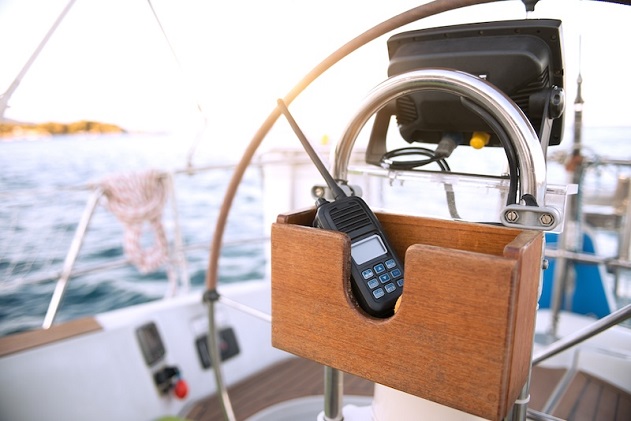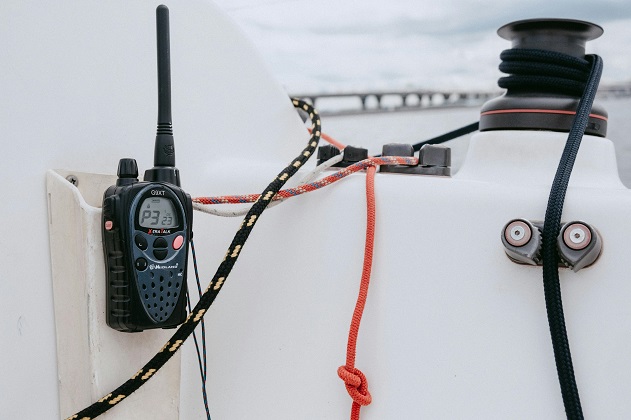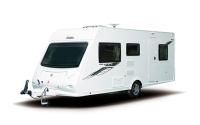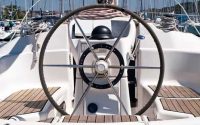Marine VHF Radios: Essential Safety Equipment for Every Boater
It’s no surprise that boat owners routinely face a bevy of safety questions that have to be answered before they leave the dock. They have to be unequivocally certain about the state of their propulsion and pumping systems, whether there’s an adequate number of life jackets and PDFs (Personal Flotation Devices) aboard, and perhaps most importantly, the serviceability of their VHF radio.
While the rules regarding which types and sizes of boats are required to carry radios can vary from state to state, the fact is, that having one onboard makes solid safety sense. A reliable marine radio gives you access to critical navigational and weather information, as well as convenient boat-to-boat and boat-to-shore communications anytime you’re on the water. Most importantly though, in an emergency, a radio provides you with the crucial path of transmission that can save lives. Ideally, that makes it one of the most valuable pieces of equipment you can take on the water with you.
VHF Simplicity Guarantees Unparalleled Marine Safety

From 25W, helm-mounted transceivers that are perfect for cabin cruisers, to pocket-sized, IP-rated transceivers that float and flash the moment they touch the water, high-quality marine VHF radios are an essential part of boat ownership. They offer subscription-free, always-available reliability that cell phones and GPSs don’t have, with the advantage of active, 2-way frequency monitoring at all times by coastal stations and the AMSA (Australian Maritime Safety Authority) for distress, or other calls for maritime assistance.
While medium frequency (MF) and high frequency (HF) marine radios are ideal for over-the-horizon boat-to-shore communications, VHF radios rely on the certainty and simplicity of line-of-sight (LOS) orientation for signal propagation. With its direct line of transmission and frequency range of 30MHz – 300Mhz, the narrow wavelengths used by VHF marine radios makes them ideal for:
- Long-distance transmissions. LOS’s wide area propagation allows VHF boat radios to transmit to distances up to 160km with limited loss of signal quality due to either natural or man-made interference.
- Network-free communication. Marine-approved VHF radio sets don’t require network connectivity to communicate with multiple radios as long as their LOS orientation isn’t interrupted.
- Direct communication with telephone networks. When patched through a base station or repeater, a modern marine VHF radio can communicate directly with terrestrial landline and cell phone networks.
Unlike MF and HF radios, which consume massive power, especially when transmitting, the LOS aspect of VHF radios for boats also means that they don’t need a lot of power to push waves between transmitting and receiving antennas. A lower power requirement, however, doesn’t mean that a VHF boat radio inherently lacks performance or functionality. VHF’s quality is unmistakable, and you only have to look at the premium quality VHF marine radios Australia manufactures to understand that they don’t lack anything.
GME Perfects the Art Of Dash-mounted Modularity
Uncompromising reliability and compact design are the two most important qualities to look for in any VHF marine radio, and that’s precisely what you get from Sydney’s own GME Radios. GME has been on the leading edge of top-tier RF radio manufacturing for more than 60 years, and their product line includes everything from locator beacons for hikers and campers, to fixed mount radios for severe-duty mining and agricultural vehicles. It’s their rugged selection of marine-ready VHF radios for sale though, that are among the most highly respected transceivers in the world when it comes to inland and offshore communications.
GME is known for easy-to-operate, vibration-resistant marine VHF radios that boat owners know they can trust, and it’s evident in dash-mounted transceivers like their black box GMX750 that boasts an array of features that include:
- 25W maximum output @ high level, 1W maximum output @ low level;
- Power consumption of less than 4.4 amp @ high level, 1.1 amp @ low level;
- A waterproof speaker microphone, and IPX7-rated body against exposure to water of up to 1m for 30 minutes;
- Dual and triple watch with programmable priority channels; and,
- Two working channel memories.
Together with their ability to withstand temperature ranges from -10°C to 55°C, and UV-resistant cases, these VHF radios for boats are suitable for mounting anywhere on a bridge or flydeck. Their black box-style design, however, also makes them the perfect transceiver for mounting inside concealed compartments or behind walls where there’s less direct exposure to the elements. The transceiver’s 8-pin panel socket can be mounted anywhere, allowing you to make the unit’s full-function LCD controller microphone accessible from anywhere on the boat. You can even use a DIN Y cable adapter to create multiple 8-pin locations above and below the deck that you can conveniently connect the controller to.
Flexible GME Portable Radios Are the Small Boater’s Preference
While every boat owner needs a radio with them when they push off, it’s understandable that not every boat can accommodate a dash-mounted unit. That’s why for small boat owners, premium quality, large display GME handheld marine VHF radios for sale like their GX625 are among the best options available.
Not only is the GX625 one of the market’s most affordable portable VHF marine radios for sale, but it’s also one of the most flexible in its class and offers a selection of features that include:
- 5W maximum output @ high level, 1W maximum output @ low level;
- An extended life, 1200mAh Lithium Ion (Li-Ion) battery pack;
- IP66-rated ingress protection against water and dirt;
- Dual and triple watch with programmable scan; and,
- A flexible, high-gain antenna that’s good for transmissions up to 5 nautical miles.
Ideally, handhelds like the GX625 are equally capable as either primary radios for small inland boat owners or in boat-to-boat communications for kayak and dinghy operators who need to maintain contact with a larger boat. They’re also equipped with float and flash technology, ensuring that in case of an emergency, the radio, and ultimately the radio operator, can be easily located.
The Final Word

At the end of the day, it doesn’t matter if you’re taking family and friends offshore for the weekend, or slipping off quietly to a favourite inland fishing cove, safety comes first. You have to have a reliable way to reach out for help if a problem occurs though, and that’s precisely what you get with a VHF radio.
No matter if you’re looking for a dash-mounted unit, or a handheld that you can conveniently strap to your wrist, high-quality marine VHF radios like the ones from GME offer everything you need to keep your time on the water safe. They’re the ideal choice for all your boating activities.


